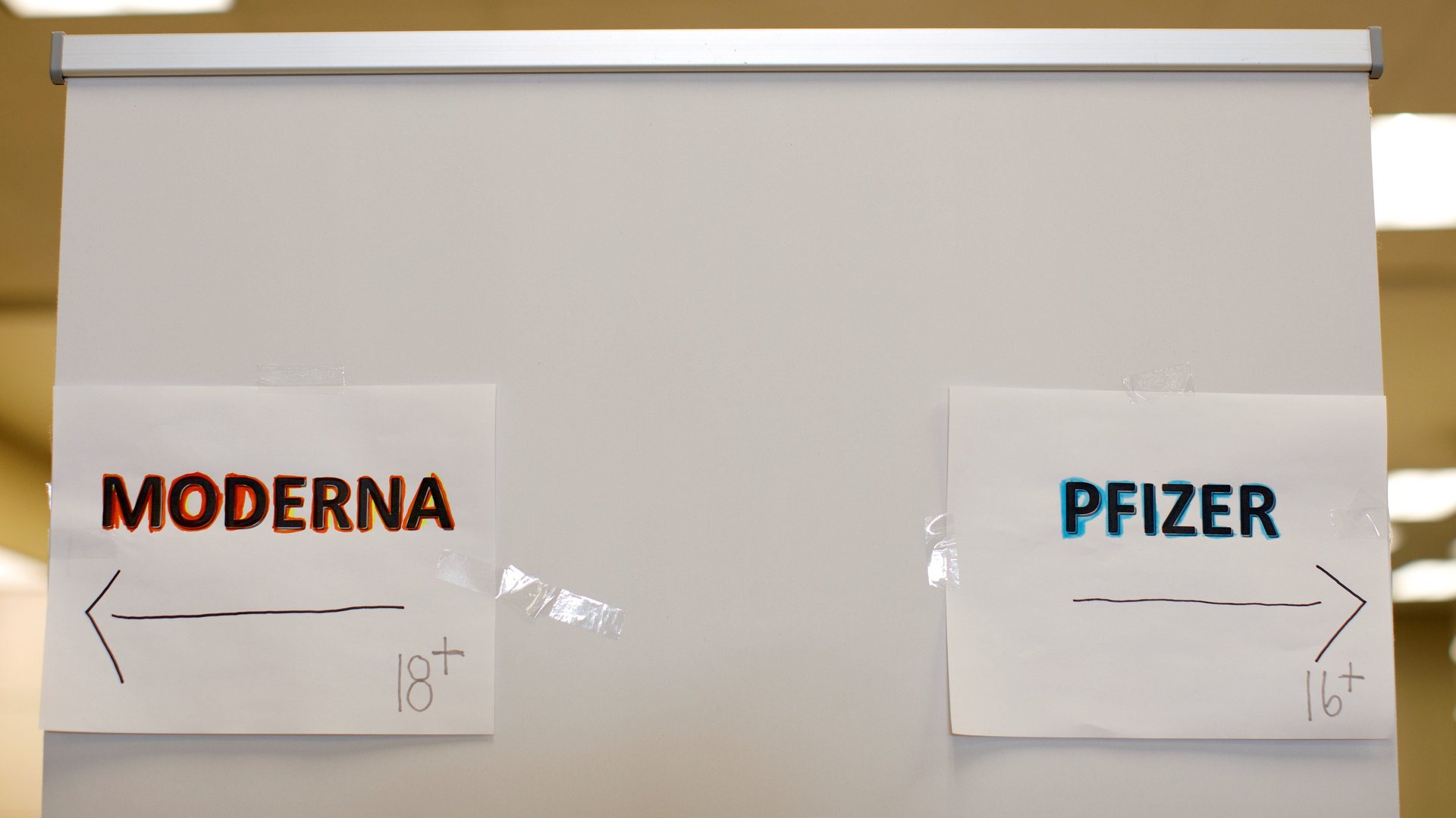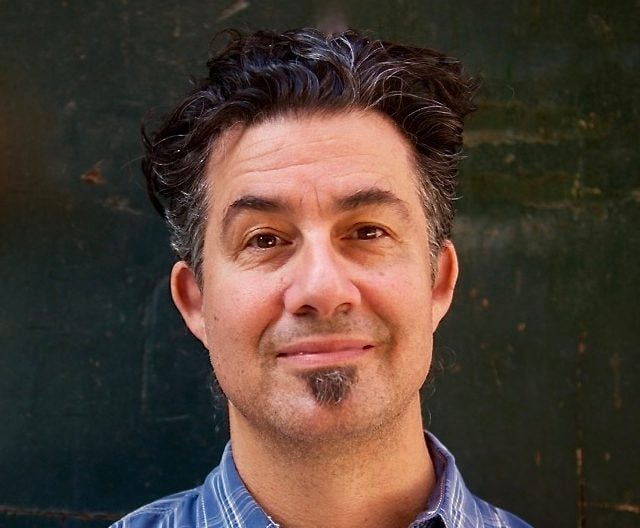The founder of Moderna doesn’t think vaccines are all that impressive
Derrick Rossi doesn’t quite see it this way, but he kind of saved the world.


Derrick Rossi doesn’t quite see it this way, but he kind of saved the world.
In 2008, he began researching messenger RNA (mRNA), building on the long-ignored work of Hungarian researcher Katalin Karikó and Drew Weissman, an immunologist at the University of Pennsylvania. In 2010, his discovery that modified mRNA, the molecule that gives DNA instructions on how to behave, could be inserted into cells to produce proteins opened up a world of possibilities for the medical uses of mRNA technology.
It was a finding big enough to attract capital, allowing him to found a biotechnology company in Cambridge, Massachusetts, with Timothy Springer, who like Rossi, was a professor at Harvard Medical school, and Robert Langer, an inventor, and professor at MIT.
In thinking of a name for the company, Rossi toyed with synonyms of “messenger”—including, at one point, “harbinger,” only to realize the term was typically used for someone announcing the arrival of a destructive army. “It was the bad messenger—so that was not a good idea,” he says.
Eventually, he figured he had had a name under his nose since 2008, when his lab’s staff started experimenting with modified mRNA and referring to it, for short, as “mod RNA.” Moderna.
The early days of Moderna
Rossi, 55 and a native of Canada, is still based in Cambridge, but left Moderna in 2014 to focus on his academic research. He never lost faith in the promise of mRNA. “DNA makes RNA makes protein makes life. So wherever there’s life, which is in all of disease pathology, mRNA could potentially play a role,” he explains.

“We had our fingers on one of the really key levers of essentially all aspects of the disease, all aspects of life. I imagined that it was going to turn into a major therapeutic paradigm,” he says. “One of the biggest challenges we had when we started the company was there were so many different things we could work on.” Thousands of genetic diseases, not to mention cancer, could potentially be treated through mRNA technology.
But what Rossi didn’t imagine when he started Moderna is that the world would get to know mRNA through a vaccine. “Vaccines were not even really on the table in the early days of the business,” he says.
One reason, he says, was that vaccines typically don’t make much money. That is, not unless billions of doses are needed at once to end a pandemic, which isn’t exactly the model you’d want to rest your new biotech business on.
The other reason was more resonant to the scientist in him: Vaccines just aren’t that exciting. “You have to give somebody a dose once or twice and then let the immune system take over. So it’s nice and easy,” he says. “You don’t even have to deliver it in a particular spot. You give an intramuscular shot in the arm and the system can do its job.”
Rossi was instead interested in using mRNA technology to treat rare genetic diseases which couldn’t be cured by other means.
The pandemic accelerator
Because the potential of mRNA technology was so huge, for years the research targeted more complex applications. Moderna focused on therapeutics including regenerative medicine (for instance, helping cells produce tissue to heal from events such as cardiac arrest) and genetic disease. Later, BioNTech, an immunotherapy company founded in Germany in 2008, also began publishing research on mRNA-based immunotherapy after licensing the same technology that had led Rossi to his discovery.
As is common with new therapeutic research, neither company had an approved product for years, which raised doubts about mRNA’s potential—and the viability of the companies working on it. Yet in 2013, Moderna, secured $240 million in funding from AstraZeneca to work on mRNA-based treatments for heart disease, and went public in 2018—raising $621 million, and presenting its research plans for mRNA for cancer treatment.
Prior to 2020, the company, which now employs more than 1300 people, had obtained promising results in animal testing for its candidates for mRNA-based drugs for treating cardiovascular disease and cancer, but was still far from having products approved for human use.
Then Covid-19 happened, and Moderna was able to produce a vaccine candidate just over a month after Chinese scientists published the virus’s sequencing. About a month later, BioNTech partnered with Pfizer to work on a Covid-19 vaccine, too—and the companies set off to make history.
In a matter of months, Moderna went from an unknown company to a globally recognized brand, and mRNA from an obscure technology to arguably the most exciting medical innovation in decades. “For a new therapeutic modality, it’s actually pretty fast considering now hundreds of millions of people are getting an mRNA product,” says Rossi.
Rossi always thought it was just a matter of time for mRNA to prove its worth. The pandemic, of course, accelerated the progress dramatically, but in hindsight, Rossi thinks it makes sense vaccines were the first mRNA treatment to be approved. “It’s a very low technical bar. You have mRNA for an antigen that somebody has never been exposed to, and very quickly in the peripheral blood you can measure antibody levels,” he says. “You have to dose it once or twice, it’s not like you have to dose it every day for five years before you start to see a clinical output.”
It is so easy, in fact, Rossi believes eventually the whole vaccine industry will use mRNA technology.
What can mRNA treat next?
It’s taken over a decade, but the scientific community is finally aware of the potential of mRNA. “When we published our initial study that kicked off the whole thing in 2010, I actually was expecting that the whole science world was going to start doing mRNA, because it had that type of power to it, and I was a little bit surprised that didn’t happen,” says Rossi.
While many of the potential applications will use mRNA to instruct the immune system to behave in a certain way, he believes mRNA technology will quickly move beyond simple vaccines, which target an external pathogen. Soon mRNA therapeutics might be tailored to instruct a person’s immune system to fight their specific type of cancer, or target protein deficiencies in specific organs, and without the toxic side effects of traditional medications. “We know exactly what (mRNA) does,” says Rossi. “I like biology that’s nice and simple like that.”
“There’s a new mRNA company sprouting up every day around the planet, like mushrooms. So there will literally be hundreds of them within five years. And they’re all going to have different programs working on different things. And I can tell you they’re not going to be vaccines. That would be ridiculous because there isn’t enough room for everybody to make vaccines,” he says.
He predicts we’ll have the first non-vaccine mRNA therapeutic drug within five years, and there will be 25 or 30 approved ones in the next decade.
Cancer, venoms, and other moonshots
Considering the virtuous ripple his 2010 mRNA publication caused, Rossi would be justified in feeling he played a part in saving humanity. Yet he is as humble as you’d hope a scientist would be. ”I’m happy to have been an important lever in sort of launching mRNA therapeutics, that’s for sure. But, you know, we built on the shoulders of others that went before us, and many people went after us as well. This is the nature of science,” he says.
While he is no longer involved in Moderna, and has retired from full-time academia, Rossi continues to be involved in various lines of medical research and is involved in running several companies, including ones working on multiple sclerosis and oncology. “I just can’t say no to good science,” he says.
And when it comes to his personal mRNA frontier, his Holy Grail, it isn’t treating cancer or autoimmune disease. “My personal moonshot is snake venom, and antivenoms for snake bites,” he says.
Acute poisoning, he says, is something that mRNA could target effectively because it can act very quickly. “You inject it into a person, and within hours the protein that you wish is being expressed,” he explains. The final product of such research, he imagines, would be an antidote that could work for the most lethal species of a specific area, delivered in a way that can be preserved for long times in very remote areas—for instance, a powder that can be stored for long periods of time and reconstituted quickly.
“You’d be surprised at how many people die each year from snakebite because there’s no antivenom available or they’re in very remote areas. So this is something that I think is totally addressable, and I don’t think anybody’s working on it,” says Rossi. Accurate estimates on snakebite deaths are hard to make, because many countries don’t report them, yet the number could be as high as nearly 100,000 a year.
Cancer, pathogens, autoimmune disease—with the possible range of application, will we eventually mRNA-treat our way to immortality? Rossi doesn’t think so.
“Immortality is not something that that will ever be achievable,” he says. “We fall apart way too completely.”